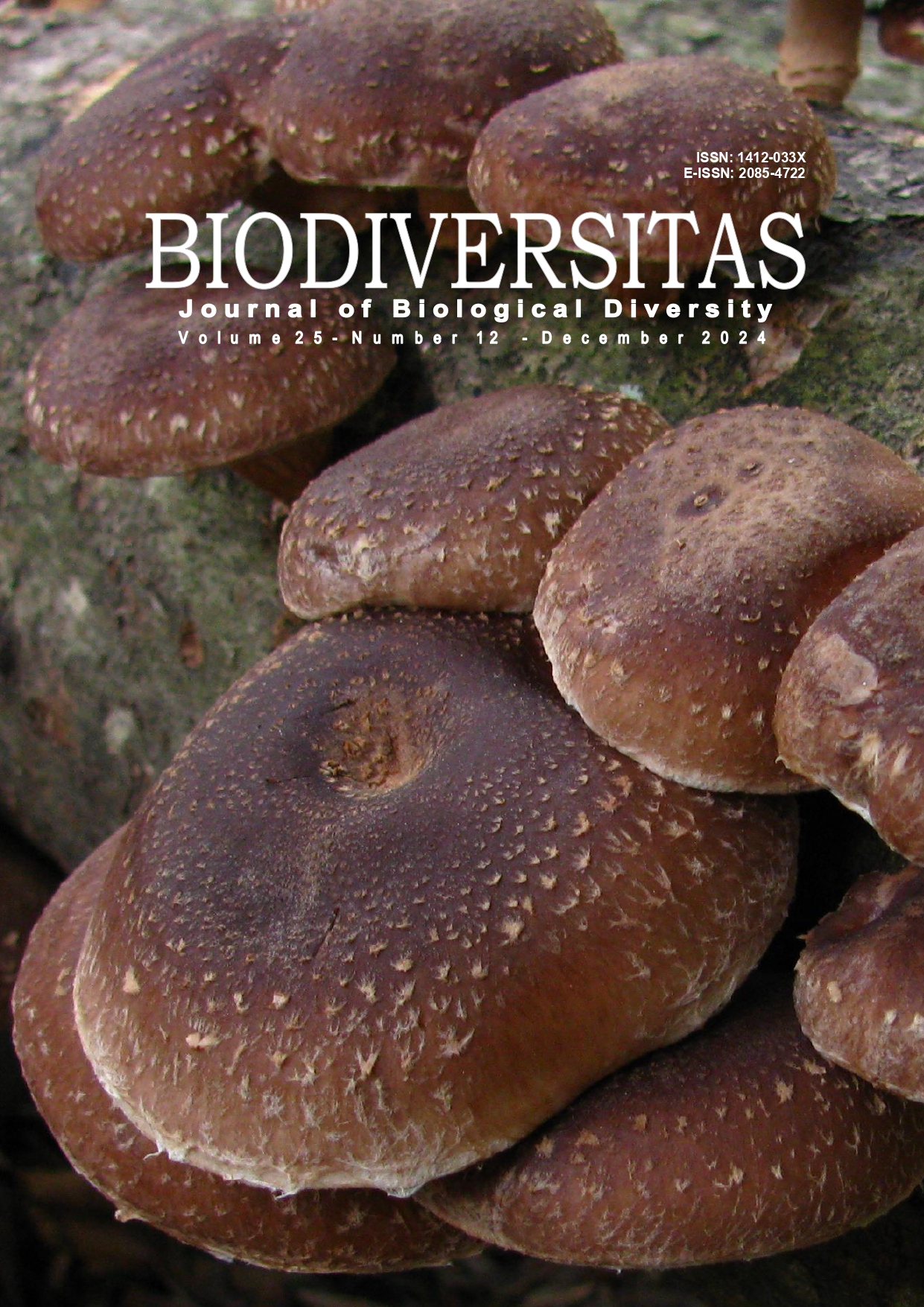Characterization and potential of L-glutaminase enzyme from symbiotic red algae Eucheuma spinosum as antibacterial, anticancer, and antiviral dengue agents by in vitro
##plugins.themes.bootstrap3.article.main##
Abstract
Abstract. Karim H, Azis A, Ramadani A, Pine ATD, Anita, Ahmad A, Mukriani, Massi MN, Permana AD. 2024. Characterization and potential of L-glutaminase enzyme from symbiotic red algae Eucheuma spinosum as antibacterial, anticancer, and antiviral dengue agents by in vitro. Biodiversitas 25: 4939-4949. Cancer is a disease caused by the abnormal growth of body tissue cells. A new approach in cancer treatment through targeted therapy is using microbial enzymes. One enzyme that has potential for future cancer therapy is L-glutaminase. On the other hand, dengue fever is endemic in Indonesia, necessitating maximum and sustained efforts to address the dengue problem, including infection and cancer. Indonesia is an archipelagic nation, with two-thirds of its territory comprising seas, and boasts many diverse marine biota and macroalgae. One cultivated variety of marine algae is the red algae Eucheuma sp.. This study aimed to isolate the L-glutaminase enzyme produced by symbiotic Cobetia marina from red algae Eucheuma spinosum. The optimum activity of the L-glutaminase enzyme was found at pH 8 and 37°C. It was activated by metal ions Mg2+, Co2+, and Mn2+. The antibacterial activity test revealed that L-glutaminase at a concentration of 5 mg/L exhibited inhibitory effects on pathogenic bacteria, such as Escherichia coli and Staphylococcus aureus. Furthermore, the cytotoxic test demonstrated the most substantial impact in the F1 fraction at a concentration of 160 µg/mL, with a percent inhibition value of 25.65% and an IC50 value of 64.26 µg/mL on MCF-7 cells. The anti-dengue activity of L-glutaminase in crude extract toward Vero cells indicates inhibition percentage and CC50 value of 78% and 167.15 ?g/mL, respectively. These findings suggest that the L-glutaminase enzyme fractions from symbiotic C. marina hold promise for antibacterial and anticancer uses and antiviral activity against dengue.

